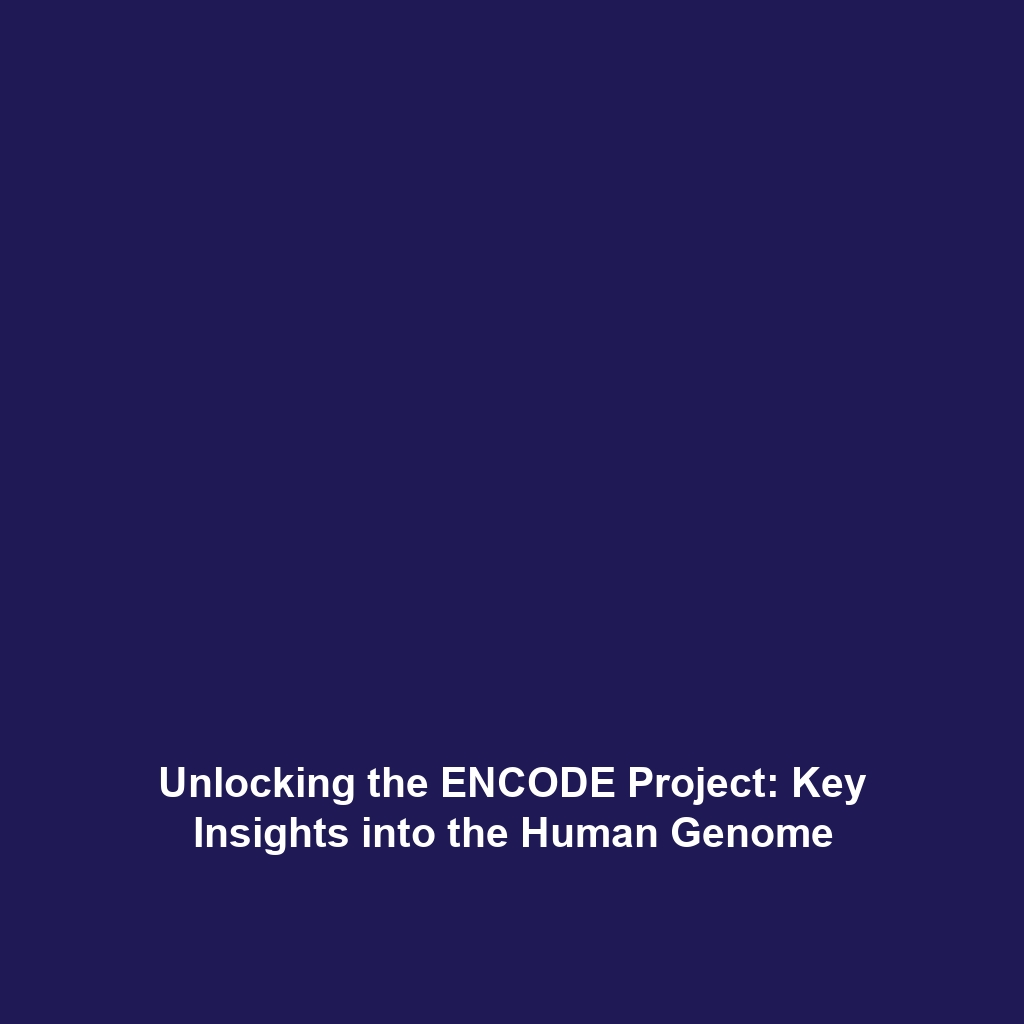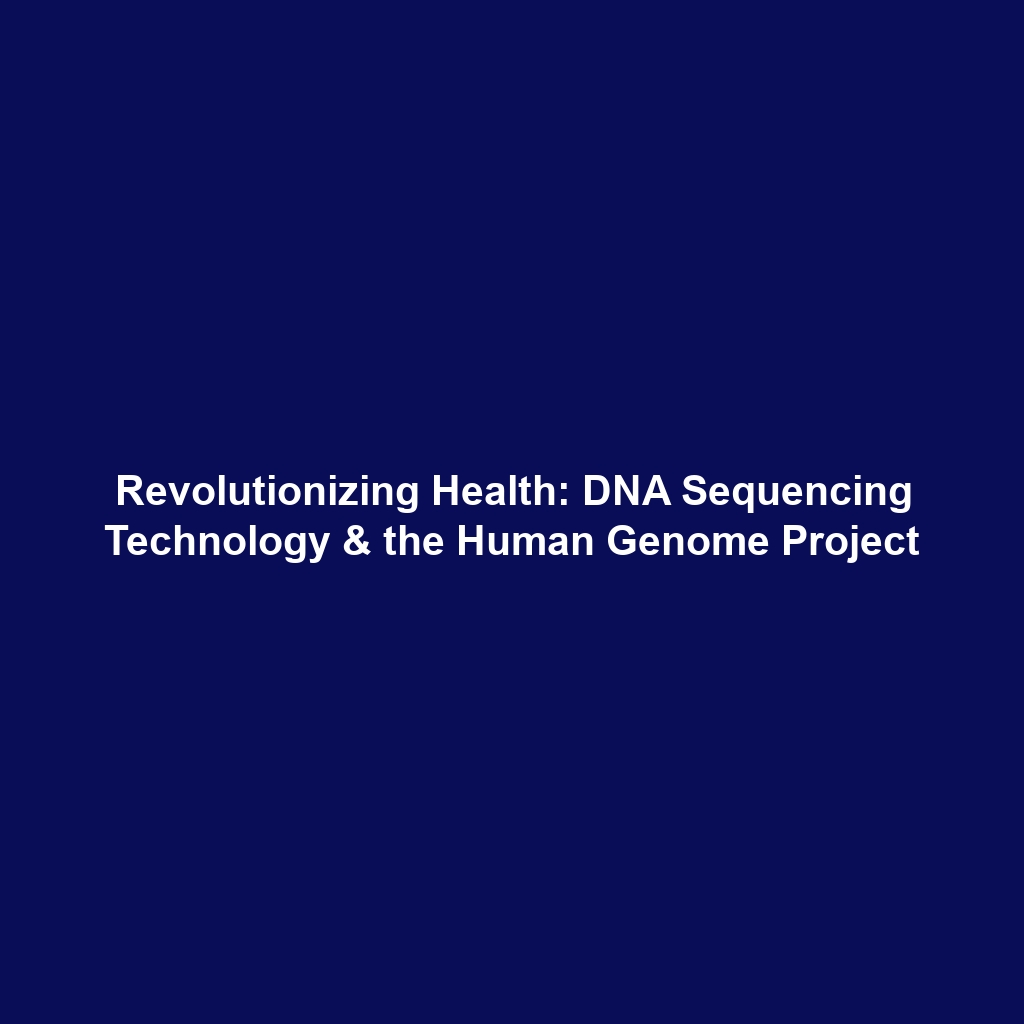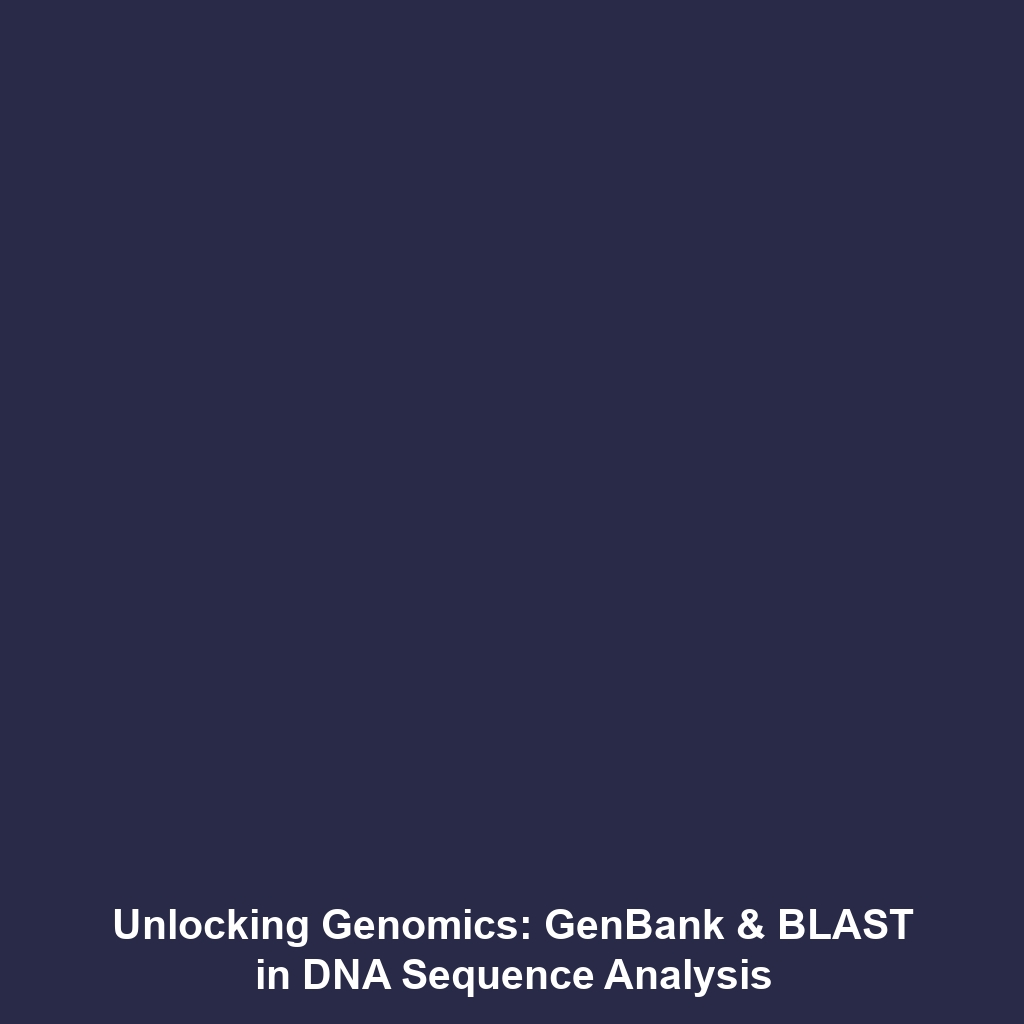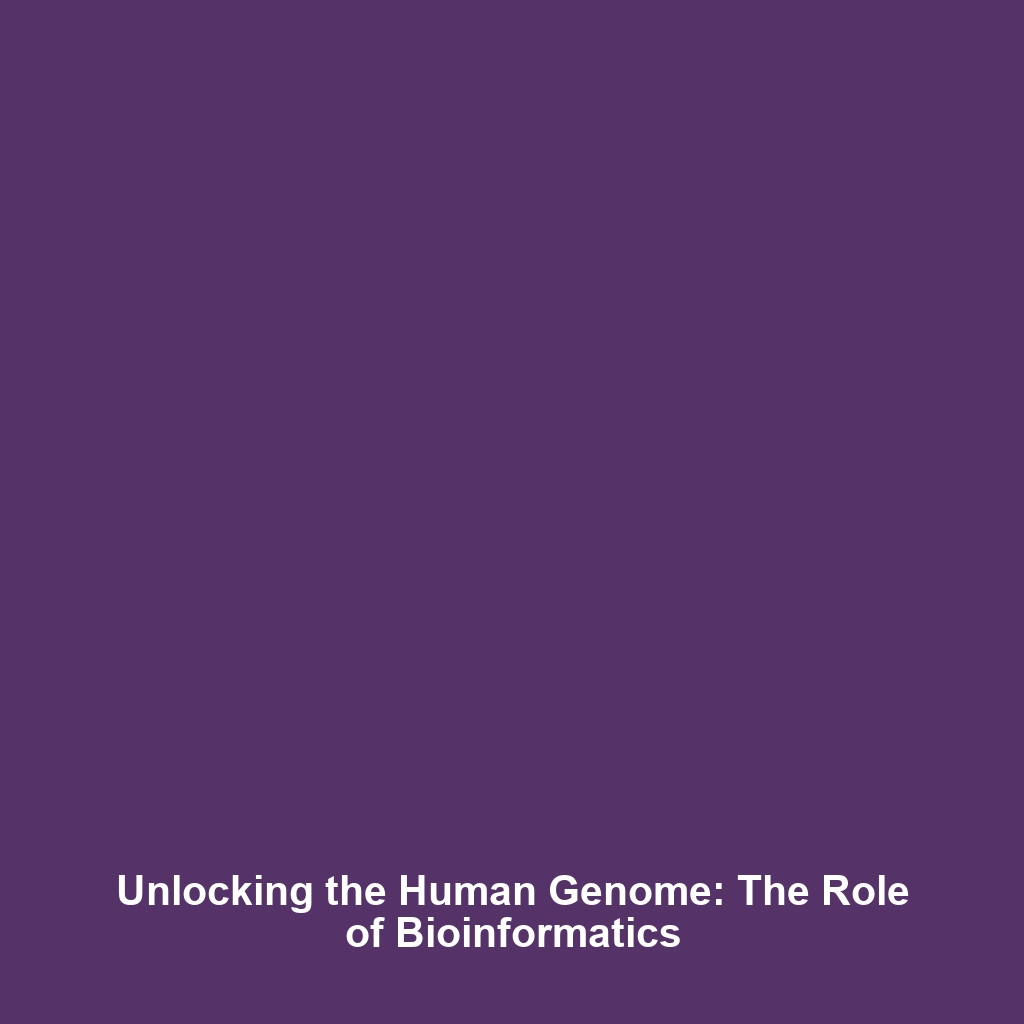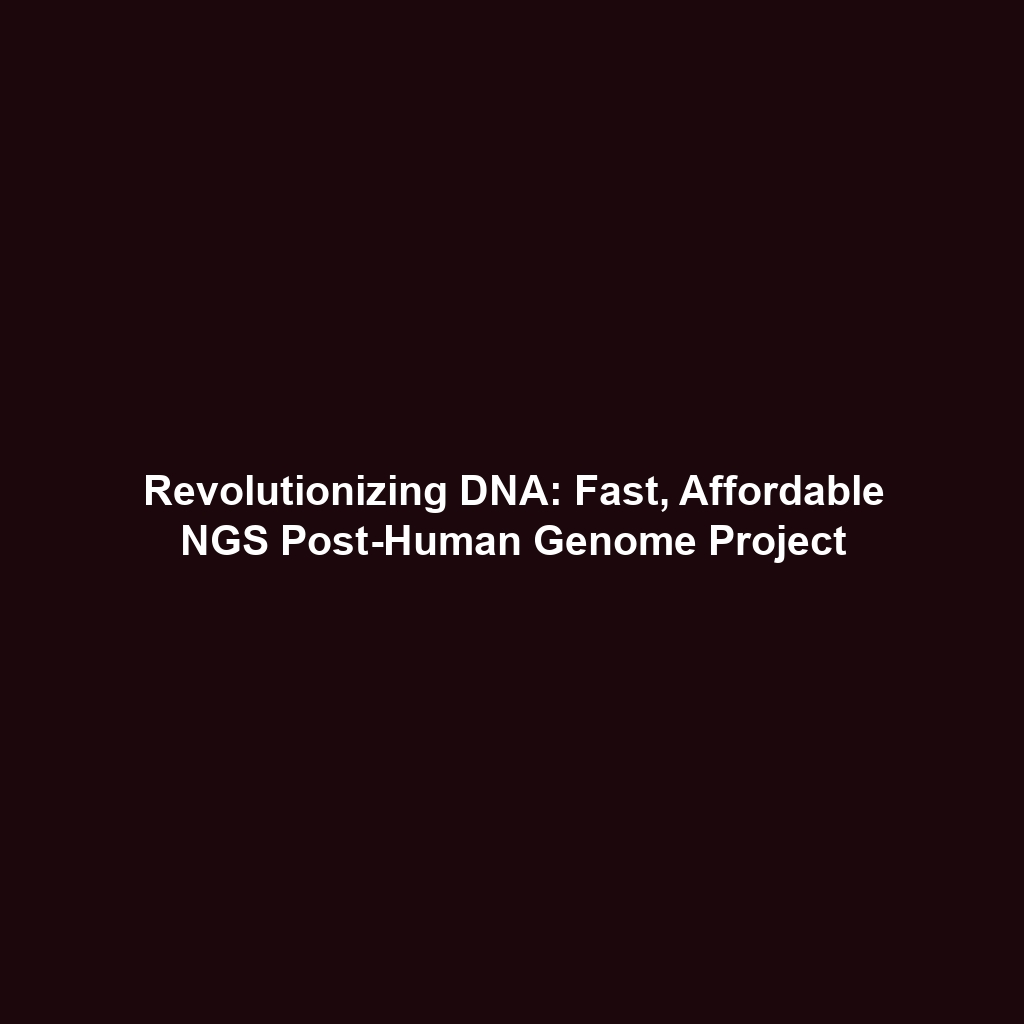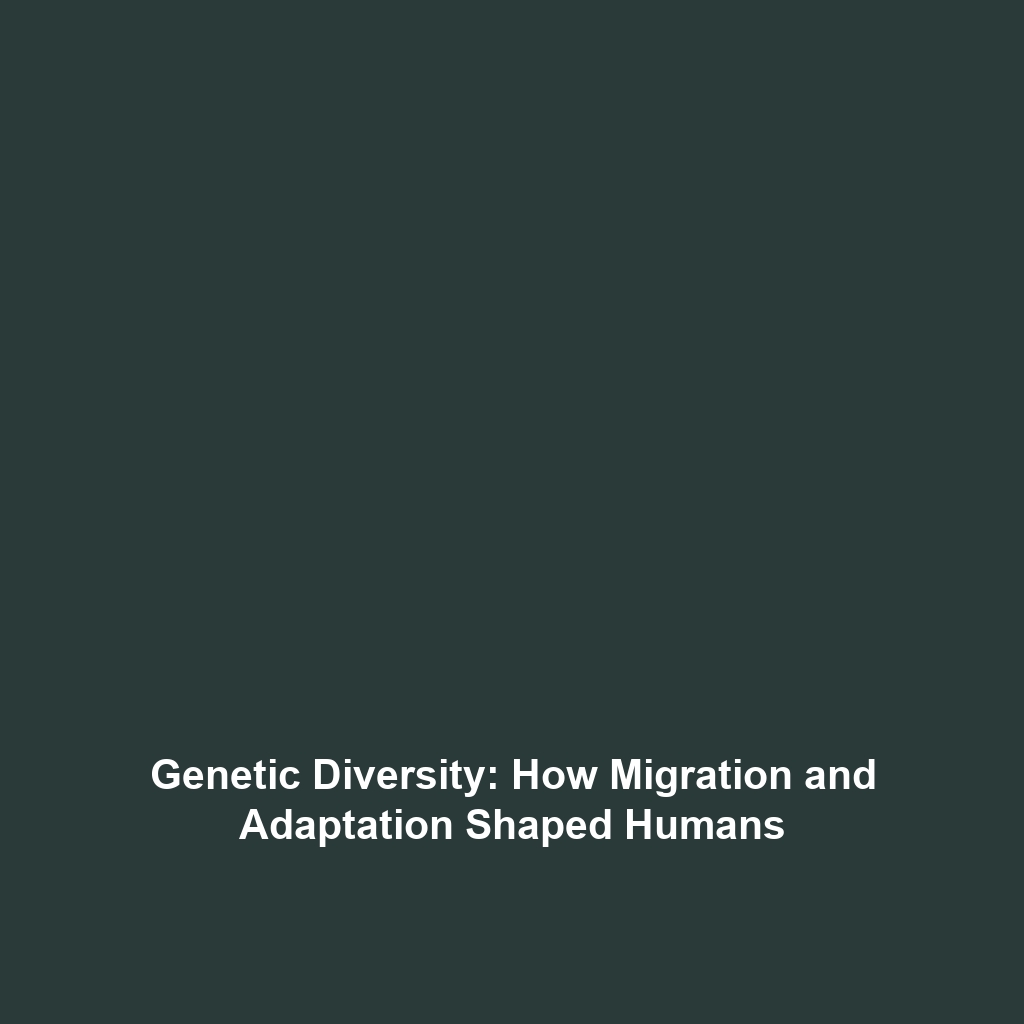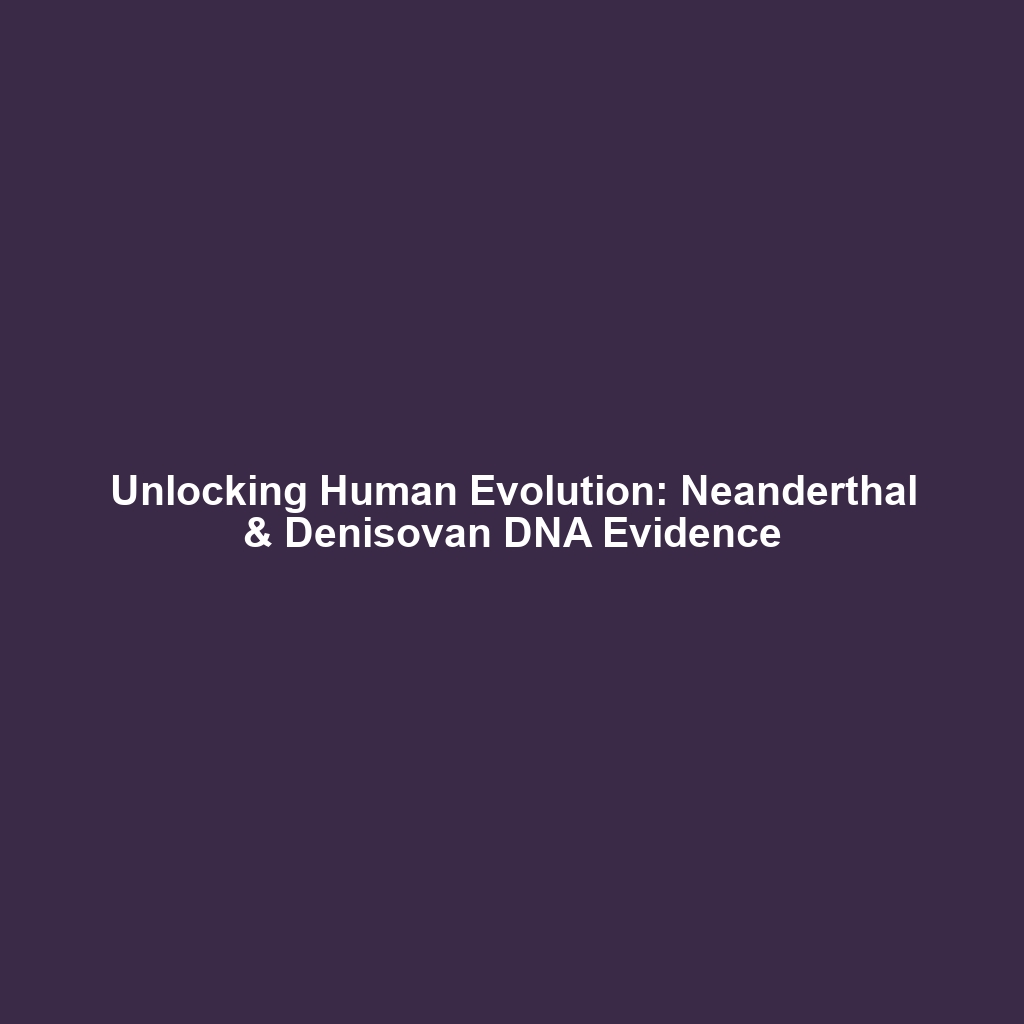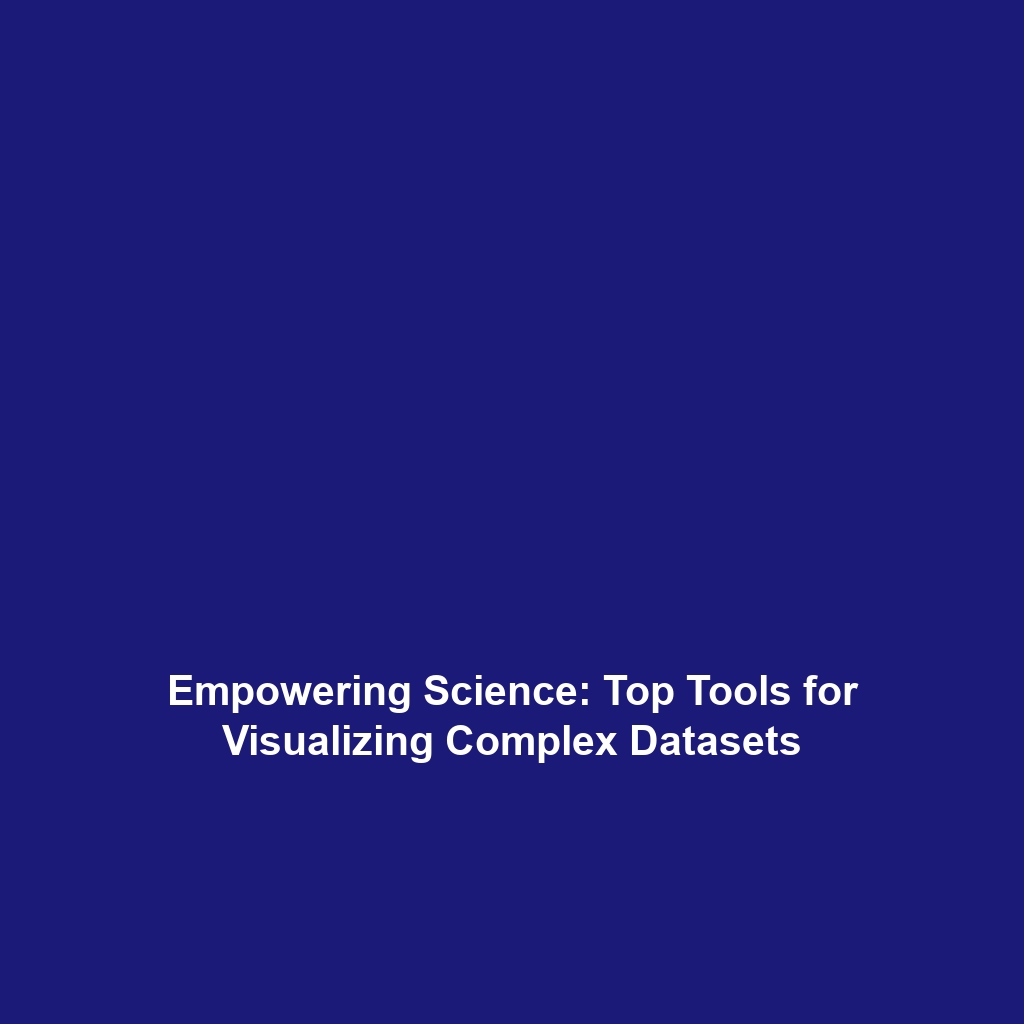ENCODE Project: Encyclopedia of DNA Elements and Its Role in Human Genome Project
The ENCODE Project (Encyclopedia of DNA Elements) is a groundbreaking initiative aimed at mapping the functional elements of the human genome. Launched in 2003, this project builds upon the foundation laid by the Human Genome Project, which successfully sequenced the entire human DNA. By identifying the roles of different DNA elements, the ENCODE Project enhances our understanding of gene regulation and cellular function, making it a pivotal component in genomics research.
Key Concepts of the ENCODE Project
The ENCODE Project encompasses several key concepts that are essential for understanding its role in the broader context of the Human Genome Project. These concepts include:
1. Functional Elements in the Genome
ENCODE focuses on identifying and characterizing the functional elements within the human genome, which include:
- Genes: Segments of DNA that code for proteins.
- Enhancers: Regulatory DNA sequences that increase the likelihood of gene transcription.
- Transcription Factors: Proteins that bind to specific DNA sequences to regulate the transcription of genetic information.
2. Data Integration and Analysis
ENCODE utilizes a diverse array of high-throughput experimental techniques, such as:
- Genome-wide association studies (GWAS)
- Chromatin immunoprecipitation (ChIP-seq)
- RNA sequencing (RNA-seq)
Applications and Real-World Uses
The findings of the ENCODE Project have led to significant real-world applications in various fields, including:
1. Medical Research
Understanding how genes are regulated aids in identifying pathways that lead to diseases such as cancer, heart disease, and diabetes.
2. Personalized Medicine
The insights gained from the ENCODE Project enhance the development of personalized treatment plans based on individual genetic profiles.
3. Evolutionary Biology
ENCODE assists in exploring the evolutionary significance of non-coding DNA and its impact on species development.
Current Challenges of the ENCODE Project
Despite its successes, the ENCODE Project faces several challenges:
- Data Complexity: The vast amount of data generated requires advanced computational tools for analysis.
- Interpreting Non-Coding Regions: The roles of many non-coding DNA elements remain poorly understood.
- Standardization of Methods: Variability in experimental techniques across studies complicates data comparison.
Future Research and Innovations
The future of the ENCODE Project is poised for exciting developments, including:
1. Next-Generation Sequencing Technologies
Advancements in sequencing technologies will allow for deeper insights into genome functionality.
2. Integration with Other Omics Data
Coupling ENCODE findings with proteomics and metabolomics will provide a more comprehensive understanding of biological systems.
Conclusion
In summary, the ENCODE Project serves as a crucial extension of the Human Genome Project, providing vital insights into the functional elements of DNA and their implications for health and disease. Ongoing research and innovations promise to enhance our understanding of genetics and open new avenues for medical breakthroughs. For more information, explore related topics such as medical research applications and bioinformatics innovations.
